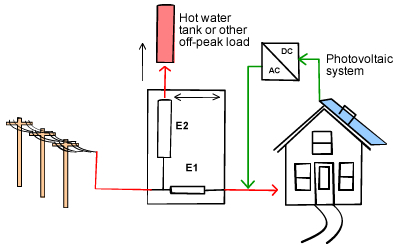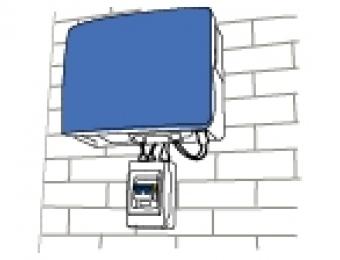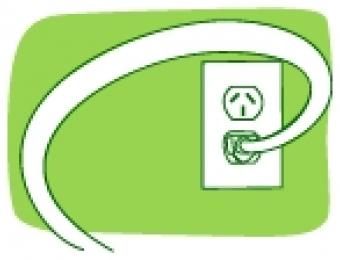What are smart meters?
Like regular meters, smart meters are ultimately devices to measure how much electricity you use in your home, although they're able to do a bit more than the regular meters. Smart meters are all-electronic - in contrast to old-style meters. The old fashioned ones are actually small electric motors spinning faster as more power is used. Smart meters also feature digital displays, so they are easier to ‘read’ than the traditional ones with their small clock face dials.
What makes meters really smart is their ability to communicate with ‘head office’. Being digital, smart meters can do this, for example, via a radio network. Many smart meters are able to communicate with each other, and form a communications network known as a 'mesh network' in order to pass information.
Smart meters are like mini computers. They measure voltage and also current, and multiply these two values on a continual basis. The multiplication of voltage and current provides a measure of the amount of power used (voltage x current = power).
These voltage and currents are ‘sampled’, and the power results from each individual sampling are added up over 15-minute periods. Thus power is measured in watt-minutes, watt-hours and kilowatt-hours. You are billed on the basis of the latter.
What is a 'time of use', or TOU tariff?
Time of use (or TOU) tariff refers to the fact that the billing cost may change depending on the day of the week or time of the day. For example, during times when electricity demand is likely to be at its peak, the cost of power supplied may be higher than times when less power is likely to be used. You should check with your electricity supplier to find out how time of use tariffs are employed.
Are smart meters more expensive?
You may have heard that smart meters increase the cost of electricity. That's untrue, of course. Smart meters measure energy, the same amount of energy that would have been measured by an old fashioned meter.
There have also been rumours circulated saying that smart meters spew out electromagnetic radiation. That’s also just the result of people's fear and uncertainty - smart meters don't have any more electric and magnetic field surrounding them than traditional meters.
Smart meters, solar and wind electricity
Smart meters can be used with solar PV (photovoltaic) installations or wind turbine generators. Just how it all works depends on the number of ‘elements’ in the meter. An ‘element’ is the ‘guts’ for measuring power flow - what is basically needed is an element for the solar or wind portion, one for the house, and one for the hot water system if it's electric and runs on a night rate tariff.
Have a look at the diagrams below and all will be clear. If there’s just one element, the meter can only measure net power flow - the difference between energy consumed in the house and generated on the roof. That scenario is no good if the householder is on a gross feed-in tariff - that is, if the credit on the bill is based on everything generated on the roof irrespective of how much is used in the house.
Solar scenario 1 - single service installation, bidirectional metering
This scenario features a house with a photovoltaic installation. In this scenario, the smart meter provides two meter readings - 'import' and 'export', based on how much power is fed into the grid, and how much is drawn from the grid. The net power that's exported to the grid can be net billed, or charged at any rate. In this scenario, a single 'element' is used to measure how much electricity moves to and from your home.
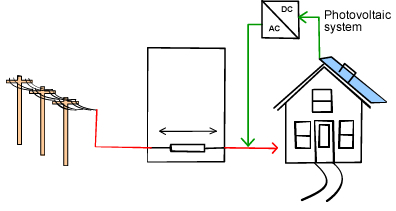
Solar scenario 2 - SEDA preferred application
The Sustainable Energy Development Authority (SEDA) 'preferred' method for a smart meter to gauge electricity usage and feed-in from a solar panel setup uses two separate elements - and meters both energy produced by the solar panels and energy consumed by the solar panels. This type of system allows for both net and differentiated billing.
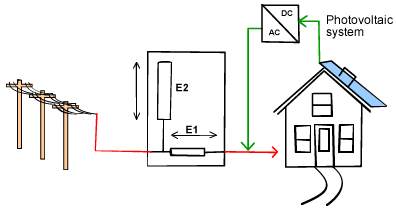
Solar scenario 3 - Dual service installation, one service charge at offpeak rate
In the following scenario, the meter provides three meter readings: the amount of power imported at the general domestic rate, the amount of power imported at the off-peak rate, and, and the amount of power exported. The net power that's exported to the grid can be billed as a net amount, or charged at any rate.
